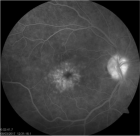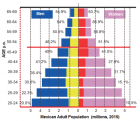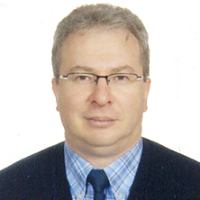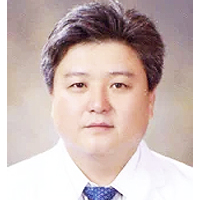Early Online (Volume - 9 | Issue - 1)
Efficient Sequential Chromatographic Purification of a Recombinant Nanobody-Fc Fusion Designed for Treatment of Severe Fever with Thrombocytopenia Syndrome
Published on: 29th January, 2025
Severe fever with thrombocytopenia syndrome (SFTS) is caused by a virus that induces acute infections. Despite its expansion beyond China, where it first appeared in 2009, no specific drug exists to treat the disease. The discovery that antibodies targeting the SFTS virus surface glycoprotein (Glycoprotein N, GN) significantly enhance patient survival has driven the development of antibodies, particularly nanobodies. Nanobodies targeting the GN protein are a promising therapeutic approach. This paper presents a systematic study of the purification process for a recombinant nanobody-Fc fusion designed to treat the SFTS virus HB29. The study evaluated a sequential purification approach using affinity (AFF), ion exchange (IEC), and hydrophobic interaction chromatography (HIC) techniques to gradually remove impurities. The results demonstrate that this approach achieves an overall yield of more than 50% and a total purity of 95%. Efficient nanobody purification methods, as outlined here, can pave the way for novel treatments to manage this disease.
Biologically Active Compounds of Plants in Uzbekistan Flora and their Potential Applications in Agriculture
Published on: 18th March, 2025
Computational Simulation of Phase-Molecular Separation-DNA/RNA-Related Function Based on Gene Ontology using Combination of Computational Fluid Dynamics, Machine Learning and Membrane Systems
Published on: 21st May, 2025
Our evaluation and its outcomes/outcomes/hints spotlight that gaining a (having to do with measuring matters with numbers) knowledge of the proteome company in living cells, and its outcomes/consequences/tips for the (introduction and production/ organization of objects) of condensates and MLOs, is a critical assignment that the section separation field wishes to face/address. Our findings that dosage-sensitive (tiny chemical meeting commands interior of living things), insufficient (tiny chemical meeting commands internal of living things) and homologs especially, are overrepresented amongst human LLPS drivers, spotlight furthermore the needed component of preserving the mobile (oversupply/huge quantity) of the (bearing on everyone or issue) DNA/RNA merchandise at a great degree well suited with tightly managed LLPS conduct, to keep away from extreme (diseases/the have a look at of diseases) that unexpected errors in any direction may also cause. In-depth close interest of the records on DNA/RNA concentrations used in the LLPS experiments assisting our excessive self-belief dataset of human driver DNA/RNA s laid the uncertainties related with defining the frame-shape-related meaningful ranges of this essential restriction/guiding principle that leads and controls condensate (introduction and production/ organization of items), and recommended how those uncertainties can be lessened (something awful) and (ultimately) shortened.Graphical abstract: Computational Simulation of Phase-Molecular Separation-DNA/RNA-Related Function Based on Gene Ontology Using Combination of Computational Fluid Dynamics, Machine Learning and Membrane Systems.
Cannabinoids, Oxidative Stress and Female Reproduction: Where do we stand?
Published on: 6th June, 2025
Cannabis sativum has long been used globally for hallucination. However, detrimental effects on female reproduction have never been studied. The aim of the present paper is to evaluate cannabinoid-induced oxidative stress and reproductive containment in female mice. Fifteen adult female Parkes strain mice were randomly chosen from institutional animal houses (n = 5/group) with ad libitum access to water and food. Animals were grouped into control (vehicle-treated), treated with 6mg of cannabis/100 g of body weight, and 12 mg of cannabis/100 g of body weight. After 15 days all animals were sacrificed and tissues were collected for histology, immunohistochemistry, and estimations of different parameters. Histology and immunohistochemistry (of Cannabinoid Receptor 1; CB1) were performed following standardized protocols. All parameters were estimated either by standard biochemical protocols or by kit following the manufacturer’s protocol. Stress parameters (Super Oxide Dismutase; SOD, Catalase, CAT; Malonaldehyde, MDA and Glutathione Peroxidase; GPx), apoptotic parameters of thecal cells (by Caspase-3 assay), serum level of Estrogen (E2), steroidogenic parameters (3β Hydroxy-steroid dehydrogenase; 3β HSD and 17β Hydroxy-steroid dehydrogenase; 17β HSD) and expression of CB1 were noted in ovary. Data were analyzed by One-way Analysis of Variance (One-way ANOVA) followed by Duncan’s Multiple Range post hoc Test. We found a significant (p < 0.05) decrease in steroidogenic parameters and a significant increase (p < 0.05)in free radical and apoptotic parameters and CB1 receptor expressions upon dose-dependent cannabis treatment. We may conclude that chronic treatment of cannabis causes reproductive containment in females which has never been addressed previously.
Artificial Intelligence (AI) in the Chemical Field: Innovation and Risk Evaluation
Published on: 15th August, 2025
This work aims to verify the various uses of AI in chemical settings and the benefits and risks of using this innovative technology.AI tools make it possible to have a powerful instrument in study or research, as well as in various chemical disciplines.After a review of some interesting scientific literature related to some interesting uses of AI and the risks involved, the results of an experimental project involved the use of a famous free AI CHATBOT (question and answer).The articles reported are involved with some benefits of AI use, but also related to the specific risks.Crucial in this world is that the results provided must be the right ones, without relevant error or the so-called “hallucinations”.The results of a specific experimental project using a free AI chatbot show errors in providing one. Chemical structure: The final human control of the AI results can be a useful method to use in a safe way for this technology today.

HSPI: We're glad you're here. Please click "create a new Query" if you are a new visitor to our website and need further information from us.
If you are already a member of our network and need to keep track of any developments regarding a question you have already submitted, click "take me to my Query."
















































































































































